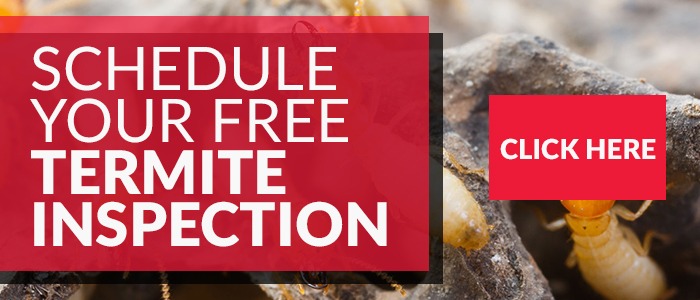One of the dangers homeowners need to be concerned with is Termites, as they can cause tremendous damage both inside and outside of the home. According to Realtor.com, termites are considered the biggest threat to wood-based structures, ahead of both fires and flooding.
Fortunately, termite damage is preventable; it’s simply a matter of knowing what to look for, properly preparing your home and making sure your home has been professionally inspected/treated by a termite control company.
To properly protect your home, you have to know how to prepare your property and furthermore, know what to look for to identify a termite problem. Here is our list of the top 5 signs that your home may have termites:
Groups of Winged Insects or Discarded Wings
When termite season begins, swarms of termites take to the skies in search of places to build their colonies. Once they’ve found a suitable location, they will settle in and begin building, leaving behind their wings in the process. When inspecting your property, keep an eye out for the discarded wings of termites, this is a telltale sign that there may already be a colony of termites nearby.
Mud Tubes on Walls or Structures
When subterranean termites build their colonies, they create mud tubes (or shelter tubes) as they move from the ground into structures and homes. Their mud tubes can appear in corners and joints between surfaces and allow the termites to travel throughout their growing colonies. If you notice abnormal buildups or mud/dirt in abnormal places, it may be a sign that termites have made their way into your home.
Bubbling or Cracked Paint on Walls
When inspecting the inside of the home, take a look at your drywall and along baseboards in the home. Should you notice any bubbling or flaking of paint, or “honeycombing” on baseboards, this may be a sign of a termite problem. Internal damage to drywall and ceilings can often resemble minor water damage and can often be overlooked.
Termite Droppings – Frass
Termites produce a large number of droppings, referred to as frass when they are eating through wood inside of a home. These droppings accumulate in various areas and look like wood-colored pellets, and may resemble a pile of tiny bird seed at first glance.
Damaged or Hollow Sounding Wood
While the wooden structure in the home may appear to be in good condition visually, on the opposite side, there may be damage hiding. As termites prefer to be in dark, damp places, they very rarely let their work be visible inside of your home. Simply tapping on surfaces and listening for a hollow sound can be a good indicator that termite damage may be present. Wood and surfaces without damage should produce a solid sound, wood that has termite damage may produce a more hollow sound depending on the extent of the damage.
As always, the best way to know for sure is to have your home professionally inspected. Arrow Termite & Pest Control has the skills and technologies necessary to assess your home for termite damage properly and can help provide you with protection and peace of mind.

